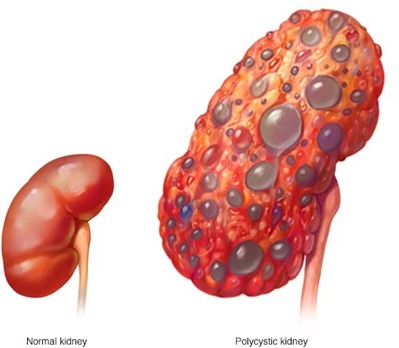A client is being treated for chronic kidney disease (CKD). On examination, the client has an elevated blood pressure (BP) and is exhibiting changes in mental status. Which intervention in the plan of care should the practical nurse (PN) implement?
Use a cushion when sitting.
Perform range of motion exercises.
Document abdominal girth.
Weigh every morning.
The Correct Answer is D
This is the best intervention for the PN to implement because it monitors the client's fluid status and helps detect fluid overload, which can cause hypertension and neurological changes. The PN should weigh the client at the same time, on the same scale, and with the same clothing every day.

A. Using a cushion when sitting is not a priority intervention for this client and may not address the BP or mental status issues.
B. Performing range of motion exercises is not a priority intervention for this client and may not address the BP or mental status issues.
C. Documenting abdominal girth is not a priority intervention for this client and may not be an accurate indicator of fluid status.
Nursing Test Bank
Naxlex Comprehensive Predictor Exams
Related Questions
Correct Answer is B
Explanation
The correct answer is choiceB. Culture for sensitive organisms.
Choice A rationale:
C-reactive protein (CRP) levels are indicative of inflammation in the body and can help identify the presence of an infection. However, CRP levels do not provide specific information about the type of organism causing the infection, which is crucial for targeted treatment.
Choice B rationale:
A culture for sensitive organisms is essential in this scenario because it identifies the specific bacteria or other pathogens present in the wound. This information is critical for selecting the appropriate antibiotic therapy to treat the infection effectively.
Choice C rationale:
Serum albumin levels are important for assessing nutritional status and overall health, which can impact wound healing. Low albumin levels can indicate poor nutritional status and delayed wound healing, but they do not provide immediate information about the infection itself.
Choice D rationale:
Serum blood glucose (BG) levels are crucial for managing diabetes and can affect wound healing. High blood glucose levels can impair the immune response and slow down the healing process. However, like CRP, BG levels do not provide specific information about the type of infection present in the wound.
Correct Answer is A
Explanation
The correct answer is Choice A:
"Determine home navigational safety hazards.”. Choice A rationale:
The PN should first assess the client's home for safety hazards that may be contributing to the client's unsteadiness and increased fall risk. Identifying and addressing these hazards can help create a safer environment for the client and potentially prevent accidents.
Choice B rationale:
Encouraging the client to obtain a medical alert device is not the immediate priority in this situation. Addressing the client's safety and identifying potential hazards should be the first step before considering additional measures like medical alert devices.
Choice C rationale:
Recommending that the client obtain a walker is premature without first assessing the home
environment and determining if there are any correctable safety issues. The PN should prioritize safety assessment before recommending any assistive devices.
Choice D rationale:
While maintaining the client's privacy is important, it is not the most urgent action in this scenario. The priority is to assess the client's safety and identify potential hazards in the home. Privacy concerns can be addressed afterward.
Whether you are a student looking to ace your exams or a practicing nurse seeking to enhance your expertise , our nursing education contents will empower you with the confidence and competence to make a difference in the lives of patients and become a respected leader in the healthcare field.
Visit Naxlex, invest in your future and unlock endless possibilities with our unparalleled nursing education contents today
Report Wrong Answer on the Current Question
Do you disagree with the answer? If yes, what is your expected answer? Explain.
Kindly be descriptive with the issue you are facing.
